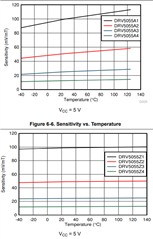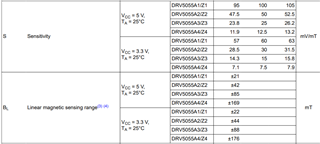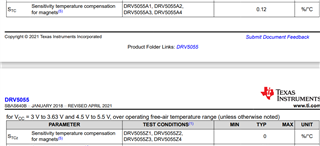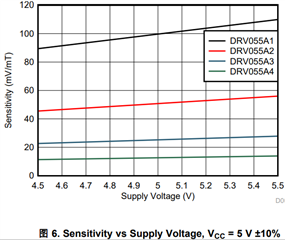Hi Team,
About temperature compensation and voltage influence
1. Temperature compensation problem
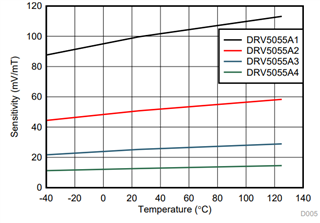
From the curve, the sensitivity of A1 increases with temperature, and the sensitivity of A4 basically does not change. Does this mean that A1 has temperature compensation, but A4 has no temperature compensation?
2. Input voltage influence problem:
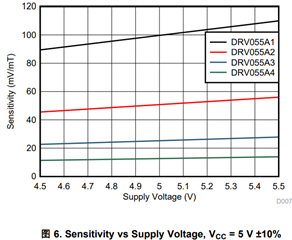
Does this curve show the effect of input voltage on sensitivity? It can be seen that A1 changes greatly with voltage, and A4 basically has no change. Customer would like to know could it be understood that when choosing a Hall chip, he should choose a Hall element such as A4 that has a relatively small voltage fluctuation?
Thanks,
Annie




